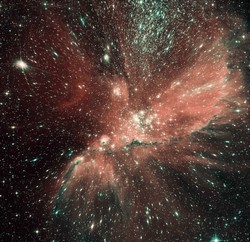In the birthplace of extrasolar planets
Circumstellar discs are the extrasolar analogues of the dust complex in the Kuiper belt encircling our solar system. They have been observed from optical up to millimetre wavelengths, from the ground as well as space. Numerous theoretical models have also been developed to describe how circumstellar discs evolve, giving their place to planetary discs and, eventually, planets. However, past studies relied on poor statistics, with only a few known objects. The EU-funded DISCANALYSIS (Analysis and modelling of multi-wavelength observational data from protoplanetary discs) project was launched with the aim of combining a wide range of observations to constrain different aspects of disc structure and dust content. For the first time, 85 circumstellar discs were probed from optical through near-infrared wavelengths in scattered light to the millimetre regime corresponding to thermal emission. In addition to archived data, scientists exploited the latest data from ongoing observational programmes, such as the Herschel Space Observatory and the Hubble Space Telescope. All these data were folded in to find quantitative evidence of disc evolution. Scientists followed grains growing up to millimetre-sized particles and larger grains to fluffy aggregates that ultimately create kilometre-size planetesimals. Furthermore, they developed theoretical models of 45 selected objects, reproducing dust evolution in discs as coherently as possible. An unprecedented level of completeness was reached with the inclusion of physical, chemical and radiative processes. The multi-wavelength data sets compiled and the model results cover all evolutionary stages until discs start to dissipate. All aspects of circumstellar disc evolution through to the first stages of planet formation, which were poorly understood, had been explored by the time the project ended. DISCANALYSIS capitalised on its team expertise in observation analysis and modelling, and provided long-awaited answers to fundamental questions related to planet birth.
Keywords
Extrasolar planets, circumstellar discs, DISCANALYSIS, Hubble Space Telescope

